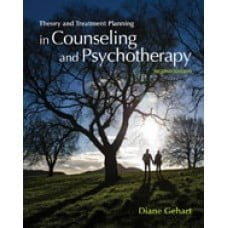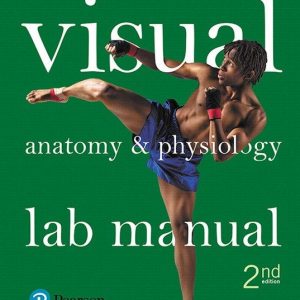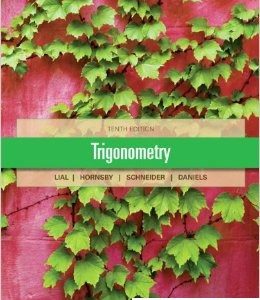This is completed downloadable of Solution Manual for Theory and Treatment Planning in Counseling and Psychotherapy, 2nd Edition

Product Details:
- ISBN-10 : 1305089618
- ISBN-13 : 978-1305089617
- Author:
Gehart’s book helps readers gain the skills and knowledge outlined in current CACREP Standards. It introduces counseling and psychotherapy theories using theory-informed case conceptualization as well as treatment planning. Assignments empower readers to apply theoretical concepts and develop real-world skills as early as possible in their training, resulting in greater mastery of the material.
Table of Content:
- Section I: Introduction to Theories, Competencies, and Treatment Planning
- Ch 1: Counseling Theory, Competency, Research, and You: Connecting the Dots
- What Distinguishes a Counselor from a Bartender?
- Competency in Counseling and Psychotherapy
- Research and the Evidence Base
- Rock-Paper-Scissors and Other Strategies for Choosing a Theory
- Questions for Personal Reflection and Class Discussion
- Online Resources
- References
- Ch 2: Treatment Planning
- Treatment Planning
- The Brief History of Mental Health Treatment Planning
- Clinical Treatment Plans
- Theory-Specific Case Conceptualization
- Treatment Plan Format
- Writing Useful Treatment Tasks
- Client Goals
- Writing Useful Interventions
- Do Plans Make a Difference?
- Questions for Personal Reflection and Class Discussion
- Online Resource
- References
- Section II: Counseling and Psychotherapy Theories
- Ch 3: Psychoanalytic and Psychodynamic Counseling and Psychotherapy
- Lay of the Land
- Psychodynamic Theory
- Putting It All Together: Psychodynamic Case Conceptualization and Treatment Plan Templates
- Research and the Evidence Base
- Evidence-Based Treatment: Brief Psychodynamic Counseling
- Tapestry Weaving: Working with Diverse Populations
- Psychodynamic Case Study
- Questions for Personal Reflection and Class Discussion
- Online Resources
- References
- Ch 4: Jungian Analytic Psychology
- Jungian Analytic Psychology
- Putting It All Together: Jungian Case Conceptualization and Treatment Plan Templates
- Research and the Evidence Base
- Tapestry Weaving: Applications with Diverse Populations
- Jungian Case Study
- Questions for Personal Reflection and Class Discussion
- Online Resources
- References
- Ch 5: Adlerian Individual Counseling
- Lay of the Land
- Putting It All Together: Adlerian Case Conceptualization and Treatment Plan Templates
- Tapestry Weaving: Working with Diverse Populations
- Research and the Evidence Base
- Adlerian Case Study
- Questions for Personal Reflection and Class Discussion
- Online Resources
- References
- Ch 6: Person-Centered Counseling and Psychotherapy
- Lay of the Land
- Person-Centered Counseling
- Putting It All Together: Person-Centered Case Conceptualization and Treatment Plan Templates
- Tapestry Weaving: Working with Diverse Populations
- Research and the Evidence Base
- Person-Centered Case Study
- Questions for Personal Reflection and Class Discussion
- Online Resources
- References
- Ch 7: Existential Counseling and Psychotherapy
- Lay of the Land
- Putting It All Together: Existential Case Conceptualization and Treatment Plan Templates
- Research and the Evidence Base
- Tapestry Weaving: Working with Diverse Populations
- Existential Case Study
- Questions for Personal Reflection and Class Discussion
- Online Resources
- References
- Ch 8: Gestalt Counseling and Psychotherapy
- Lay of the Land
- Putting It All Together: Gestalt Case Conceptualization and Treatment Plan Templates
- Research and the Evidence Base
- Tapestry Weaving: Working with Diverse Populations
- Gestalt Case Study
- Questions for Personal Reflection and Class Discussion
- Online Resources
- References
- Ch 9: Foundational Cognitive-Behavioral Approaches
- Lay of the Land
- Cognitive-Behavioral Approaches
- Putting It All Together: Cognitive-Behavioral Case Conceptualization and Treatment Plan Templates
- Reality Theory
- Mindfulness-Based Approaches
- Tapestry Weaving: Working with Diverse Populations
- Research and the Evidence Base
- Cognitive-Behavioral Case Study
- Questions for Personal Reflection and Class Discussion
- Online Resources
- References
- Ch 10: Evidence-Based Cognitive-Behavioral Approaches: Dialectic Behavior Therapy and Trauma-Focused
- Lay of the Land
- Dialectical Behavior Therapy
- Putting It All Together: Cognitive-Behavioral Case Conceptualization and Treatment Plan Templates
- Trauma-Focused Cognitive Behavioral Therapy
- Putting It All Together: TF-CBT Case Conceptualization and Treatment Plan Templates
- Research and the Evidence Base
- Tapestry Weaving: Working with Diverse Clients
- DBT Case Study
- Questions for Personal Reflection and Class Discussion
- Online Resources
- References
- Ch 11: Systemic Family Counseling and Therapy
- Lay of the Land
- Putting It All Together: Systemic Treatment Plan Case Conceptualization and Treatment Plan Templates
- Snapshot: Bowen’s Intergenerational Family Approach
- Snapshot: Satir’s Human Growth Model
- Research and the Evidence Base
- Evidence-Based Therapy: Emotionally Focused Therapy
- Tapestry Weaving: Diversity Considerations
- Systemic Case Study
- Questions for Personal Reflection and Class Discussion
- Online Resources
- References
- Ch 12: Solution-Based Approaches
- Lay of the Land
- Solution-Based Counseling
- Putting It All Together: Solution-Based Treatment Plan Case Conceptualization and Treatment Plan Tem
- Solution-Focused School Counseling
- Tapestry Weaving: Working with Diverse Populations
- Research and the Evidence Base
- Solution-Focused Case Study
- Questions for Personal Reflection and Class Discussion
- Online Resources
- References
- Ch 13: Narrative and Collaborative Approaches
- Lay of the Land
- Narrative Approaches
- Putting It All Together: Narrative Treatment Plan Case Conceptualization and Treatment Plan Template
- Collaborative Language Systems and Reflecting Teams
- Putting It All Together: Collaborative Treatment Plan Case Conceptualization and Treatment Plan Temp
- Research and the Evidence Base
- Tapestry Weaving: Working with Diverse Populations
- Postmodern Case Study
- Questions for Personal Reflection and Class Discussion
- Online Resources
- References
- Ch 14: Feminist and Multicultural Counseling and Psychotherapy
- Lay of the Land
- Feminist Counseling
- Putting It All Together: Feminist Treatment Plan Case Conceptualization and Treatment Plan Templates
- Research and the Evidence Base
- Tapestry Weaving: Working with Diverse Populations
- Feminist Case Study
- Questions for Personal Reflection and Class Discussion
- Online Resources
- References
- Section III: Theoretical Integration and Case Conceptualization
- Ch 15: Introduction to Theoretical Integration
- And Now for the Exciting Conclusion
- Integration Options
- Integration with Integrity
- Wrapping Up Integration
- Questions for Personal Reflection and Class Discussion
- Online Resources
- References
- Ch 16: Integrative Case Conceptualization
- Case Conceptualization and Great Counseling
- Elements of Case Conceptualization
- Introduction to Client
- Presenting Concern
- Background Information
- Assessment of Strengths and Diversity
- Theoretical Conceptualizations
- Psychodynamic and Adlerian Conceptualization
- Humanistic-Existential Conceptualization
- Cognitive-Behavioral Conceptualization
- Family Systemic Conceptualization
- Postmodern-Feminist Conceptualization
- Case Conceptualization, Diversity, and Sameness
- This End is Just the Beginning
- Questions for Personal Reflection and Class Discussion
- Online Resource
- References
- Case Conceptualization Form
- Name Index
- Subject Index
- Appendix A: Treatment Plan Rubric
- Appendix B: Comprehensive Case Conceptualization Rubric





